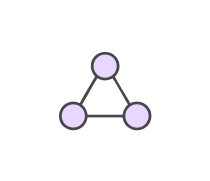Layer 1 of the OSI Model defines the methods of moving data between...
VLAN Tagging, also known as Frame Tagging helps identify packets...
Layer 7 of the OSI Model supports application and end-user protocols....
Name the unique physical address assigned by the NIC manufacturer.
Layer 3 of the OSI Model uses switching and routing technologies,...
What is the maximum theoretical data rate per stream achievable under...
Layer 2 of the OSI Model transfers data between adjacent (i.e....
A POE device such as an external POE Injector, is commonly known as a...
ICMP, IPv4, IPSec, RIP & ARP are all protocols which are commonly...
Client devices (e.g. PCs or laptops) receive the correct VLAN packets...
What does OSI stand for in the OSI Model?
Name the following OSI Model Layers.
What is a router?
Client devices (e.g. PCs or laptops) only receive the correct VLAN...
The RJ-45 connector used in UTP networks typically terminates ____...
What is the maximum distance over which POE power can be guaranteed...
Switches operate at the _______________ OSI level
The maximum power delivered by 802.3at Power Sourcing Equipment is...
Ports on switches which are configured as Trunk Links may be...
DNS, DHCP, SSH, HTTP, FTP & SMTP are all protocols which are...
What is the frequency range of the IEEE 802.11g standard?
Ports on switches which are configured as Access Links are usually...
Within Ethernet networks, how many active logical paths may exist at...
The IEEE standard 802.3af states the specifications for which of the...
Which of the following best describes what Spanning Tree Protocol...
The maximum power delivered by 802.3af Power Sourcing Equipment is...
IEEE 802.11ac is a recent Wi-Fi specification which has been fully...
When a POE device is a Switch, it is commonly called an Endspan.
What is the frequency range of the IEEE 802.11n standard?
The maximum power delivered by 802.3af Power Sourcing Equipment is...
IEEE 802 is a family of standards which define how much of what we...
As data travels down the OSI layers it reaches the _______ layer which...
Within IEEE 802.11, what does MIMO stand for?
Ports on switches which are configured as Access Links are able to be...
The maximum power delivered by 802.3at Power Sourcing Equipment is...
Which protocol prevents undesirable switching loops (e.g. multiple...
Which of the following best describes what switches do?
What is the smallest number of cables that are required in order to...
Typically in Australia, the DC Voltage supplied via 802.3af or 802.3at...
What is the maximum theoretical data rate achievable using...
Select five things you should always do when terminating a Cat 5 cable...
When terminating a Cat 5 cable to an RJ-45 connector for a...
What are the two forms of equipment that PoE may be found in?
What is the maximum theoretical data rate per stream achievable under...
Select two benefits which are provided by creating VLANs? (Choose two)
What best practice design principle would lead you to disable support...
At what Layer in the OSI Model would the following components commonly...
Select four (4) protocols which you WOULD NOT typically find in the...
Select three benefits of Multicasting in a Network. (Choose 3)
At what Layer in the OSI Model would the following components commonly...
Select three advantages of VLANs? (Choose three)
















